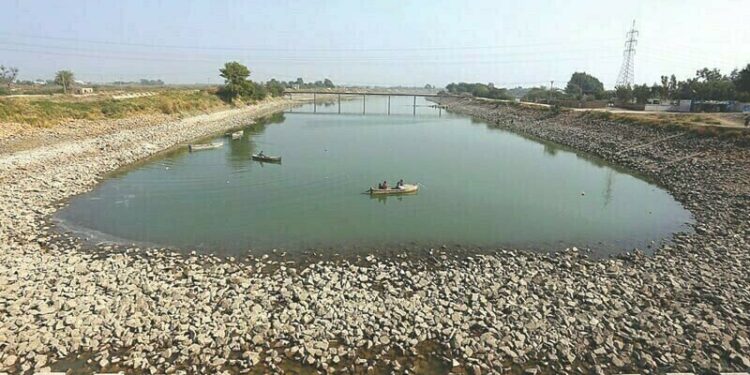Introduction: Major Relief for Kharif Season Agriculture
In a significant development for Pakistan’s agricultural sector, the Indus River System Authority (IRSA) has announced an increase in provincial water shares following an improvement in river inflows. This decision has substantially reduced the water shortage for the ongoing Kharif season to 27%, a major improvement from the earlier projected 43% deficit. As a result, hopes for a successful cotton sowing season have been reignited across the country.
Understanding the Indus Waters Treaty and Kharif Water Management
The Indus Waters Treaty, signed in 1960 between India and Pakistan, governs the distribution of river water resources between the two nations. Within Pakistan, the management and allocation of water resources, especially during critical cropping seasons like Kharif (April to September), are overseen by IRSA.
The Kharif season is crucial for crops such as rice, sugarcane, cotton, maize, and mash. Adequate water supply during this period is essential for ensuring high yields and maintaining food security. Historically, water shortages have led to significant agricultural losses, emphasizing the critical role of IRSA’s timely water management decisions.
Recent Developments: Improved River Inflows and Water Storage
Melting Snow and Seasonal Rains Boost River Flows
The recent increase in river inflows can be attributed primarily to the melting of snow in northern Pakistan, particularly around Skardu and adjoining areas, where temperatures have risen to between 19 and 20 degrees Celsius over the past two weeks. Seasonal rains have also contributed to the improved water availability.
However, IRSA has cautioned that upcoming weather forecasts predict a drop in temperatures due to continued rainfall, which could temporarily slow down the rate of snowmelt and consequently reduce river flows in the coming 7–8 days.
IRSA’s Strategic Water Management Approach
An official from IRSA explained that the authority has been following a cautious and conservative water release strategy to balance the uncertain climatic conditions.
Initially, provinces were allocated only minimal water shares — barely enough for drinking and essential needs — due to fears of an extreme shortage. This approach allowed IRSA to respond dynamically to improvements in river inflows, gradually increasing the water supply in line with agricultural demands.
The official emphasized that starting the season with a conservative estimate and then increasing water releases is far less risky than beginning with high allocations and later imposing cuts, which could devastate standing crops.
Provincial Water Allocations: Significant Increases Announced
In light of the improved water situation, IRSA has revised the provinces’ water allocations:
- Punjab: Water release increased from 41,000 cusecs to 64,800 cusecs for the next ten days.
- Sindh: Share raised from 35,000 cusecs to 45,000 cusecs.
- Khyber Pakhtunkhwa: Maintained at 1,900 cusecs.
- Balochistan: Maintained at 500 cusecs.
It is noteworthy that Khyber Pakhtunkhwa and Balochistan are exempted from cuts in their water shares, ensuring a steady supply for these relatively water-scarce regions.
Status of Major Dams: Tarbela and Mangla Show Improvement
Tarbela Dam
The inflow at Tarbela Dam has seen a significant rise:
- Inflow: Increased from 22,000 cusecs on April 1 to 52,000 cusecs by mid-April.
- Outflow: Upped from 15,000 cusecs to 20,000 cusecs.
- Storage: Live storage improved to 0.435 million acre-feet (MAF).
- Water Level: Rose from 1,404 feet to 1,427 feet.
Mangla Dam
Mangla Dam has similarly witnessed positive developments:
- Inflow: Recorded at 42,000 cusecs compared to 27,000 cusecs earlier this month.
- Outflow: Increased from 15,000 cusecs to 25,000 cusecs.
- Storage: Water storage surged from nearly zero to 0.657 MAF.
- Water Level: Rose from 1,074 feet to 1,118 feet.
The live storage across the country’s major reservoirs reached 1.293 MAF by mid-April, compared to negligible levels at the start of the Kharif season.
Previous Predictions: A Bleak Outlook Reversed
On March 26, 2025, IRSA had predicted an exceptionally dire water shortage scenario. Due to extremely low snow accumulation and anticipated below-average rainfall, authorities projected a 43% water shortfall for the season, leading to emergency measures focusing solely on ensuring drinking water availability.
The Meteorological Department had reported that winter snowfall in critical watersheds was 31% below average, raising alarms about river flows during the summer. Early-season inflows at rim stations were just 51% of normal levels — a figure that significantly impacted initial water distribution plans.
Role of the IRSA Advisory Committee
IRSA’s advisory committee played a pivotal role in shaping the water management strategy this season. Pressured heavily by provinces, particularly Sindh, which feared catastrophic losses to agriculture, the committee had no choice but to adopt a month-by-month review strategy rather than committing to a full-season water plan.
The improved situation has now prompted IRSA to consider convening another advisory committee meeting soon — the second such meeting within a month — to reassess conditions and possibly approve further increases in water releases.
Impact on Cotton and Other Kharif Crops
The increase in water allocations comes as a major relief for cotton farmers, especially in Punjab and Sindh. Cotton is a water-intensive crop and forms the backbone of Pakistan’s textile industry, which accounts for the majority of the country’s exports.
Had the 43% shortage persisted, there would have been significant risks to the cotton sowing season, potentially causing widespread economic fallout. Now, with water availability improved, experts are optimistic about healthy crop yields, provided the river flows remain stable through the crucial months of May and June.
Other key Kharif crops like rice, maize, and sugarcane are also expected to benefit from the enhanced water supply, bolstering rural livelihoods and ensuring better food security.
Conclusion: Cautious Optimism for the 2025 Kharif Season
While the improvement in river inflows and water storage levels has brought much-needed optimism, IRSA and agricultural experts caution that the situation remains fragile. Climate unpredictability — such as sudden drops in temperature or unexpected dry spells — could still pose challenges.
Nonetheless, IRSA’s careful management, supported by timely snowmelt and favorable weather patterns, has averted a major water crisis for now. With strategic planning and ongoing monitoring, Pakistan’s agricultural sector looks set to navigate the 2025 Kharif season more successfully than initially feared.

























